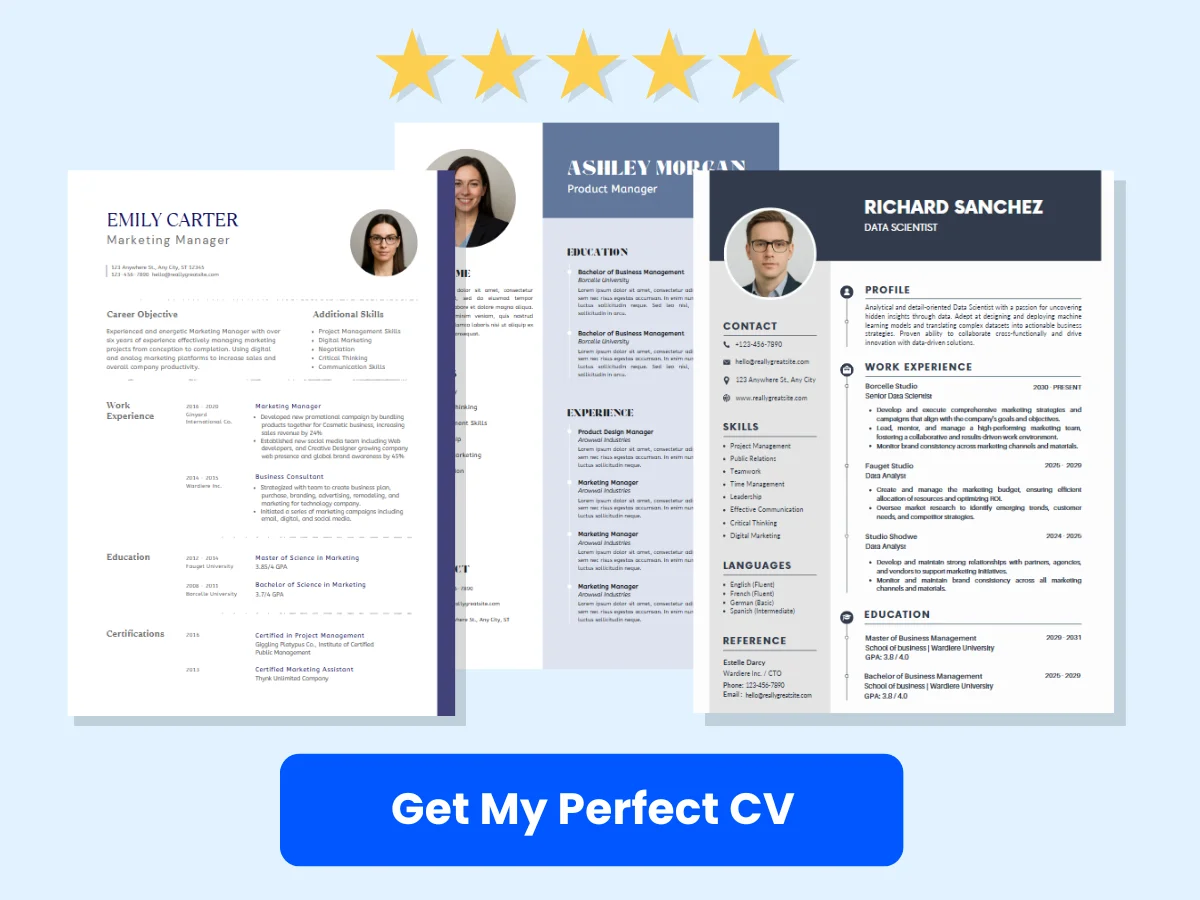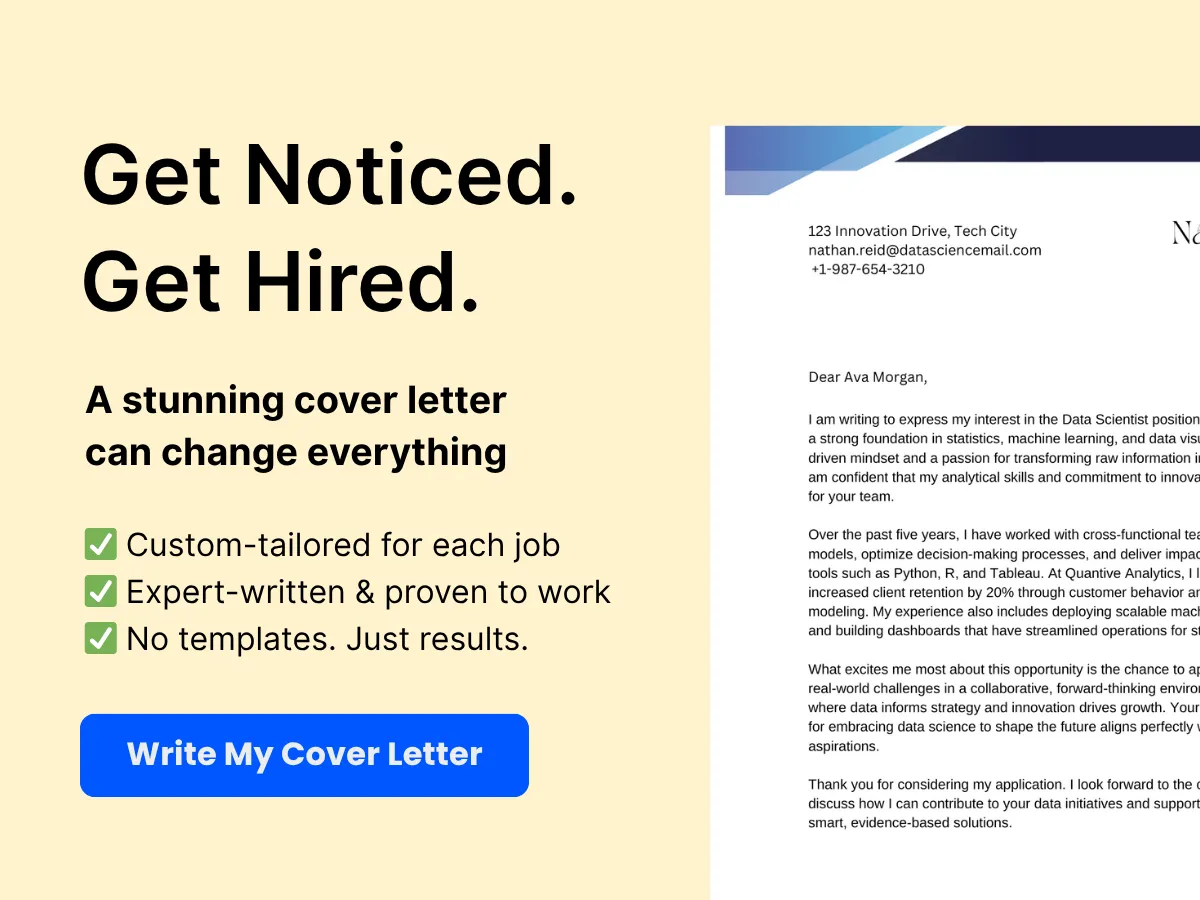In the competitive landscape of job interviews, candidates often find themselves facing a pivotal question: “What are your strengths and weaknesses?” This seemingly straightforward inquiry can be a make-or-break moment, revealing not only your self-awareness but also your ability to reflect on personal growth. Understanding how to effectively articulate your strengths and weaknesses is crucial, as it allows you to present yourself as a well-rounded candidate who is both confident and open to development.
In this article, we will delve into the nuances of answering this common interview question, providing you with essential tips and strategies to navigate it with ease. You will learn how to identify your key strengths that align with the job requirements, as well as how to discuss weaknesses in a way that demonstrates your commitment to improvement. By the end of this guide, you will be equipped with the tools to turn a potentially daunting question into an opportunity to showcase your unique value to prospective employers.
Whether you are a seasoned professional or a recent graduate, mastering this aspect of the interview process can significantly enhance your chances of success. Join us as we explore the art of discussing strengths and weaknesses, ensuring you leave a lasting impression in your next interview.
Exploring the Interview Context
Why Employers Ask About Strengths and Weaknesses
When preparing for an interview, candidates often encounter the classic question: “What are your strengths and weaknesses?” This inquiry serves multiple purposes for employers, and understanding these can help candidates craft more effective responses.
Firstly, this question allows employers to gauge a candidate’s self-awareness. A strong candidate should be able to identify their strengths and articulate how these attributes will benefit the organization. For instance, if a candidate claims that their strength is effective communication, they should provide examples of how this skill has positively impacted their previous roles, such as improving team collaboration or enhancing customer satisfaction.


Conversely, discussing weaknesses can reveal a candidate’s ability to reflect on their personal and professional growth. Employers are not looking for perfection; rather, they want to see how candidates acknowledge their shortcomings and take steps to improve. For example, a candidate might mention that they struggle with time management but have implemented strategies like prioritizing tasks and using digital tools to enhance their productivity.
Additionally, this question helps employers assess cultural fit. Different organizations value different traits, and a candidate’s strengths should align with the company’s needs. For instance, a startup may prioritize adaptability and innovation, while a more established corporation might value reliability and attention to detail. By understanding a candidate’s strengths and weaknesses, employers can better determine if they will thrive in the company’s environment.
Common Interview Formats and Settings
Interviews can take various forms, each with its own dynamics and expectations. Understanding these formats can help candidates tailor their responses effectively.
1. Traditional One-on-One Interviews
This is the most common interview format, where a single interviewer engages with the candidate. In this setting, candidates should be prepared for a conversational style. They should aim to build rapport while clearly articulating their strengths and weaknesses. For example, a candidate might say, “One of my key strengths is my analytical ability. In my last role, I was able to identify inefficiencies in our workflow, which led to a 20% increase in productivity. However, I recognize that I sometimes struggle with delegation, as I tend to take on too much myself. To address this, I’ve been working on trusting my team more and assigning tasks based on their strengths.”
2. Panel Interviews
In a panel interview, multiple interviewers assess the candidate simultaneously. This format can be more intimidating, but it also provides an opportunity to showcase adaptability. Candidates should be prepared to address different interviewers and tailor their responses to the specific interests of each panel member. For instance, if one interviewer is focused on team dynamics, a candidate might emphasize their collaborative strengths while acknowledging a weakness in public speaking, which they are actively working to improve.
3. Group Interviews
Group interviews involve multiple candidates being interviewed at the same time. This format tests not only individual strengths and weaknesses but also how candidates interact with others. In this scenario, candidates should be mindful of their communication style and how they present their strengths and weaknesses in a competitive environment. For example, a candidate might say, “I believe my strength lies in my ability to listen and synthesize ideas from others, which I demonstrated in my last project where I facilitated brainstorming sessions. However, I recognize that I can be overly critical of my own ideas, which sometimes holds me back from sharing them. I’m working on being more open to feedback and sharing my thoughts more freely.”


4. Behavioral Interviews
Behavioral interviews focus on past experiences to predict future performance. Candidates should prepare to discuss specific instances where their strengths were evident or where they faced challenges related to their weaknesses. The STAR method (Situation, Task, Action, Result) is particularly useful here. For example, a candidate might explain, “In my previous role, I was tasked with leading a project under a tight deadline (Situation). My strength in project management allowed me to create a detailed timeline and delegate tasks effectively (Task). I organized daily check-ins to ensure everyone was on track (Action), and as a result, we completed the project two days early, receiving positive feedback from our client (Result). On the other hand, I realized that my weakness in handling stress sometimes led to short tempers. I’ve since taken steps to manage stress through mindfulness techniques.”
Tailoring Your Responses to Different Industries
Different industries have unique cultures and expectations, which should influence how candidates present their strengths and weaknesses. Here are some insights on tailoring responses based on industry:
1. Corporate Sector
In corporate environments, professionalism and reliability are often prioritized. Candidates should emphasize strengths such as attention to detail, teamwork, and leadership skills. When discussing weaknesses, it’s beneficial to frame them in a way that shows a commitment to improvement. For example, a candidate might say, “One of my strengths is my ability to analyze data and make informed decisions. However, I’ve noticed that I can be overly cautious at times, which can slow down the decision-making process. I’m actively working on balancing thorough analysis with timely execution.”
2. Creative Industries
In creative fields, innovation and adaptability are highly valued. Candidates should highlight strengths related to creativity, problem-solving, and collaboration. When discussing weaknesses, it’s important to show how they can lead to growth. For instance, a candidate might say, “My strength lies in my creative thinking, which has allowed me to develop unique marketing campaigns. However, I sometimes struggle with constructive criticism, as I’m deeply passionate about my ideas. I’ve been working on embracing feedback as a tool for improvement rather than a personal critique.”
3. Technology Sector
In tech industries, technical skills and the ability to learn quickly are crucial. Candidates should focus on strengths related to technical expertise, adaptability, and teamwork. When addressing weaknesses, candidates can discuss areas for growth in a way that shows a proactive approach. For example, a candidate might say, “I excel in coding and problem-solving, which has helped me contribute to several successful projects. However, I recognize that my public speaking skills need improvement. I’ve enrolled in a public speaking course to enhance my ability to present technical information to non-technical stakeholders.”


4. Non-Profit Sector
In non-profit organizations, passion and commitment to the cause are essential. Candidates should emphasize strengths related to empathy, communication, and community engagement. When discussing weaknesses, it’s important to show a willingness to learn and grow. For instance, a candidate might say, “My strength is my ability to connect with diverse communities and understand their needs. However, I sometimes find it challenging to manage my time effectively when juggling multiple projects. I’m currently implementing a time management system to ensure I can dedicate adequate attention to each initiative.”
By understanding the context of the interview and tailoring responses to the specific industry, candidates can present their strengths and weaknesses in a way that resonates with employers. This strategic approach not only demonstrates self-awareness but also highlights a candidate’s potential to contribute positively to the organization.
Identifying Your Strengths
Self-Assessment Techniques
Understanding your strengths is a crucial step in preparing for job interviews. Self-assessment techniques can help you identify what you excel at and how these skills can benefit potential employers. Here are some effective methods to conduct a self-assessment:
- Reflective Journaling: Keep a journal where you regularly write about your experiences, achievements, and challenges. Reflecting on these entries can help you identify patterns in your strengths.
- Feedback from Others: Seek feedback from colleagues, friends, or mentors. They can provide insights into your strengths that you may not recognize in yourself.
- Personality Assessments: Tools like the Myers-Briggs Type Indicator (MBTI) or StrengthsFinder can help you understand your personality traits and strengths. These assessments can provide a structured way to identify what you do best.
- Skill Inventory: Create a list of your skills and experiences. Categorize them into hard skills (technical abilities) and soft skills (interpersonal abilities). This inventory can serve as a foundation for identifying your strengths.
Common Strengths Employers Look For
Employers often seek specific strengths that align with their organizational goals and culture. Here are some common strengths that can make you a desirable candidate:
- Communication Skills: The ability to convey information clearly and effectively is crucial in almost every job. Strong communicators can articulate ideas, listen actively, and engage with others.
- Problem-Solving Abilities: Employers value candidates who can analyze situations, identify problems, and develop effective solutions. This strength demonstrates critical thinking and resourcefulness.
- Teamwork: Collaboration is essential in many workplaces. Being a team player means you can work well with others, contribute to group efforts, and support your colleagues.
- Adaptability: The ability to adjust to new situations and challenges is increasingly important in today’s fast-paced work environment. Adaptable employees can thrive in changing circumstances.
- Leadership: Even if you’re not applying for a management position, demonstrating leadership qualities—such as taking initiative, motivating others, and guiding projects—can set you apart.
- Attention to Detail: Employers appreciate candidates who can produce high-quality work with minimal errors. This strength is particularly important in roles that require precision and accuracy.
How to Provide Evidence of Your Strengths
When discussing your strengths in an interview, it’s essential to provide concrete evidence that supports your claims. Here are some strategies to effectively demonstrate your strengths:
- Use the STAR Method: The STAR method (Situation, Task, Action, Result) is a structured way to answer behavioral interview questions. Describe a specific situation where you utilized your strength, the task at hand, the actions you took, and the results achieved. For example, if you’re highlighting your problem-solving skills, you might say:
“In my previous role as a project coordinator, we faced a significant delay due to a vendor issue (Situation). My task was to ensure the project stayed on track (Task). I quickly researched alternative vendors, negotiated terms, and implemented a new timeline (Action). As a result, we completed the project on time and received positive feedback from our client (Result).”


- Quantify Your Achievements: Whenever possible, use numbers to quantify your accomplishments. This adds credibility to your claims. For instance, instead of saying, “I improved sales,” you could say, “I increased sales by 20% over six months.”
- Prepare a Portfolio: If applicable, create a portfolio showcasing your work. This could include reports, presentations, or projects that highlight your strengths. Presenting tangible evidence can leave a lasting impression on interviewers.
- Practice Your Delivery: Rehearse how you will present your strengths and evidence during the interview. Practicing with a friend or in front of a mirror can help you refine your delivery and boost your confidence.
Aligning Your Strengths with the Job Description
To make a strong impression during an interview, it’s essential to align your strengths with the specific requirements of the job you’re applying for. Here’s how to effectively match your strengths to the job description:
- Analyze the Job Description: Carefully read the job description and highlight the key skills and qualifications the employer is seeking. Look for both hard and soft skills that are emphasized.
- Identify Relevant Strengths: From your self-assessment, identify which of your strengths align with the skills mentioned in the job description. For example, if the job requires strong communication skills, you might highlight your experience in public speaking or writing.
- Tailor Your Responses: When answering interview questions, tailor your responses to reflect the strengths that are most relevant to the position. Use the STAR method to provide examples that directly relate to the job requirements.
- Show Enthusiasm: Employers appreciate candidates who are genuinely excited about the role. When discussing your strengths, express your enthusiasm for how these strengths can contribute to the company’s success.
- Research the Company Culture: Understanding the company’s values and culture can help you align your strengths with what the employer is looking for. For instance, if the company values innovation, you might emphasize your creativity and ability to think outside the box.
By effectively identifying your strengths, providing evidence of your capabilities, and aligning them with the job description, you can present yourself as a strong candidate during interviews. This preparation not only boosts your confidence but also enhances your chances of making a positive impression on potential employers.
Presenting Your Strengths Effectively
Structuring Your Response
When it comes to discussing your strengths in an interview, the way you structure your response can significantly impact how your message is received. A well-organized answer not only showcases your strengths but also demonstrates your communication skills and ability to think critically. Here’s a simple yet effective structure to follow:
- Introduction: Start with a brief statement that introduces your strength. This should be a confident declaration that sets the tone for your response.
- Context: Provide context for your strength. This could involve mentioning a relevant experience or situation where this strength was particularly beneficial.
- Evidence: Support your claim with specific examples or achievements that illustrate your strength in action. This is where you can really shine by showcasing your accomplishments.
- Conclusion: Wrap up your response by summarizing how this strength will benefit the potential employer or contribute to the role you are applying for.
For instance, if your strength is problem-solving, you might say:
“One of my key strengths is my problem-solving ability. In my previous role as a project manager, I encountered a significant roadblock when a key supplier failed to deliver materials on time. I quickly assessed the situation, identified alternative suppliers, and negotiated expedited shipping. As a result, we were able to complete the project on schedule, which saved the company both time and money.”
Using the STAR Method (Situation, Task, Action, Result)
The STAR method is a powerful technique for structuring your responses to behavioral interview questions, including those about your strengths. By breaking down your answer into four components—Situation, Task, Action, and Result—you can provide a clear and compelling narrative that highlights your strengths effectively.


- Situation: Describe the context within which you performed a task or faced a challenge. This sets the stage for your story.
- Task: Explain the specific task or challenge you were faced with. This helps the interviewer understand what was at stake.
- Action: Detail the actions you took to address the situation or complete the task. This is where you can showcase your strengths in action.
- Result: Share the outcomes of your actions. Quantify your results when possible, as this adds credibility to your claims.
For example, if you are discussing your leadership skills, you might structure your response like this:
Situation: “In my last position as a team lead, we were tasked with launching a new product within a tight deadline.”
Task: “My responsibility was to coordinate the efforts of a cross-functional team to ensure we met our launch date.”
Action: “I organized daily stand-up meetings to track progress, addressed any roadblocks immediately, and fostered open communication among team members.”
Result: “As a result, we launched the product two weeks ahead of schedule, which led to a 15% increase in sales during the first quarter.”
Avoiding Common Pitfalls
While discussing your strengths, it’s essential to avoid common pitfalls that can undermine your message. Here are some key mistakes to watch out for:
- Being Vague: Avoid general statements that lack specificity. Instead of saying, “I’m a great team player,” provide concrete examples that illustrate your teamwork skills.
- Overconfidence: While it’s important to be confident, be careful not to come across as arrogant. Balance your strengths with humility and acknowledge the contributions of others.
- Neglecting the Job Description: Tailor your strengths to align with the job requirements. Research the company and the role to ensure your strengths are relevant.
- Focusing on Weaknesses: While it’s important to be honest about your weaknesses, don’t let them overshadow your strengths. Keep the focus on what you bring to the table.
For instance, if asked about your strengths, instead of saying, “I’m a hard worker,” you could say, “I consistently meet deadlines and have a track record of completing projects ahead of schedule, which I believe is crucial for this role.” This approach is more impactful and demonstrates your commitment to excellence.


Examples of Strong Responses
To further illustrate how to effectively present your strengths, here are a few examples of strong responses tailored to different strengths:
Strength: Adaptability
“One of my greatest strengths is my adaptability. In my previous role as a marketing coordinator, I was part of a team that had to pivot our strategy due to sudden market changes. I quickly researched new trends, collaborated with my team to brainstorm innovative ideas, and implemented a new campaign that not only met our goals but exceeded them by 20%. This experience taught me the importance of being flexible and responsive to change, which I believe is essential in today’s fast-paced work environment.”
Strength: Communication Skills
“I consider my communication skills to be one of my strongest assets. In my last job as a customer service representative, I handled a high volume of inquiries daily. I made it a point to actively listen to customers, ensuring I understood their concerns fully before responding. This approach not only resolved issues more effectively but also led to a 30% increase in customer satisfaction ratings during my tenure. I believe that strong communication is key to building relationships and fostering collaboration.”
Strength: Analytical Thinking
“Analytical thinking is a strength I pride myself on. In my role as a data analyst, I was tasked with identifying trends in customer behavior. By utilizing various analytical tools, I was able to uncover insights that led to a 25% increase in targeted marketing effectiveness. My ability to analyze data and draw actionable conclusions has been instrumental in driving strategic decisions within my team.”
By structuring your responses effectively, utilizing the STAR method, avoiding common pitfalls, and providing strong examples, you can present your strengths in a way that resonates with interviewers and sets you apart from other candidates. Remember, the goal is to not only highlight your strengths but also to demonstrate how they align with the needs of the organization and the specific role you are applying for.


Identifying Your Weaknesses
Self-Reflection and Honest Assessment
Identifying your weaknesses is a crucial step in preparing for job interviews. It requires a level of self-reflection and honest assessment that can be challenging but ultimately rewarding. Start by taking a moment to think about your past experiences, both in professional settings and in your personal life. Consider the feedback you’ve received from colleagues, supervisors, or mentors. What areas have they suggested you improve upon? This feedback can provide valuable insights into your weaknesses.
Additionally, consider using self-assessment tools or personality tests, such as the Myers-Briggs Type Indicator (MBTI) or the StrengthsFinder assessment. These tools can help you gain a clearer understanding of your personality traits and how they may translate into strengths and weaknesses in a work environment. For instance, if you discover that you tend to be more introverted, you might recognize that public speaking is a challenge for you, which can be framed as a weakness in an interview.
Another effective method is to keep a journal where you document your daily experiences and feelings about your work. Over time, patterns may emerge that highlight areas where you struggle. This practice not only aids in identifying weaknesses but also helps you track your progress as you work on them.
Common Weaknesses and How to Frame Them
When it comes to discussing weaknesses in an interview, it’s essential to choose examples that are genuine but also strategically framed. Here are some common weaknesses and suggestions on how to present them positively:
- Perfectionism: Many candidates cite perfectionism as a weakness. While it can lead to high-quality work, it can also result in missed deadlines or unnecessary stress. You might say, “I tend to be a perfectionist, which sometimes leads me to spend too much time on details. I’ve learned to set more realistic deadlines for myself and prioritize tasks to ensure I meet project timelines without compromising quality.”
- Public Speaking: If you struggle with public speaking, frame it as a skill you are actively working to improve. For example, “I’ve always found public speaking to be a challenge, but I recognize its importance in my career. To address this, I’ve enrolled in a public speaking course and have been seeking opportunities to present in team meetings.”
- Delegation: If you find it hard to delegate tasks, you can explain how this has impacted your work. You might say, “I sometimes struggle with delegation because I want to ensure everything is done correctly. However, I’ve realized that trusting my team is essential for our collective success. I’m working on this by setting clear expectations and empowering my colleagues to take ownership of their tasks.”
- Time Management: If time management is a challenge, you can discuss the steps you are taking to improve. For instance, “I’ve noticed that I can sometimes underestimate how long tasks will take. To combat this, I’ve started using project management tools to better track my time and set more accurate deadlines.”
Balancing Honesty with Professionalism
While honesty is crucial when discussing weaknesses, it’s equally important to maintain professionalism. Avoid sharing weaknesses that could raise red flags about your ability to perform the job. For instance, saying you have a poor work ethic or that you struggle with teamwork can be detrimental. Instead, focus on weaknesses that are relatable and can be framed positively.
When discussing your weaknesses, always follow up with what you are doing to improve. This demonstrates self-awareness and a commitment to personal and professional growth. For example, if you mention that you have difficulty with time management, you can elaborate on the strategies you are implementing to improve, such as using digital calendars or prioritizing tasks based on urgency and importance.
Additionally, consider the context of the job you are applying for. Tailor your weaknesses to align with the role. If you’re applying for a leadership position, discussing a weakness related to delegation is relevant. However, if you’re applying for a technical role, you might want to focus on a weakness related to a specific skill set that you are actively working to improve.
Turning Weaknesses into Opportunities for Growth
One of the most effective ways to discuss weaknesses in an interview is to frame them as opportunities for growth. This approach not only shows that you are aware of your limitations but also highlights your proactive attitude towards self-improvement. Here are some strategies to turn weaknesses into growth opportunities:
- Set Specific Goals: Identify specific areas for improvement and set measurable goals. For example, if you struggle with public speaking, set a goal to present at least once a month in team meetings or to join a local Toastmasters club.
- Seek Feedback: Actively seek feedback from peers and supervisors on your performance. This can help you identify areas for improvement and demonstrate your willingness to learn and grow. You might say, “I regularly ask for feedback from my colleagues to understand how I can improve my performance and better support the team.”
- Engage in Continuous Learning: Take advantage of training opportunities, workshops, or online courses to develop your skills. For instance, if you find that your technical skills are lacking, enrolling in relevant courses can show your commitment to professional development.
- Mentorship: Consider finding a mentor who can provide guidance and support as you work on your weaknesses. A mentor can offer valuable insights and help you navigate challenges in your career.
By framing your weaknesses as opportunities for growth, you not only demonstrate self-awareness but also a positive attitude towards personal development. This approach can leave a lasting impression on interviewers, showcasing your resilience and commitment to continuous improvement.
Identifying and discussing your weaknesses in an interview is a delicate balance of honesty, professionalism, and strategic framing. By engaging in self-reflection, choosing relatable weaknesses, and demonstrating your commitment to growth, you can effectively navigate this common interview question and leave a positive impression on potential employers.
Presenting Your Weaknesses Constructively
When it comes to job interviews, discussing your weaknesses can be one of the most challenging aspects. However, it is also an opportunity to demonstrate your self-awareness, growth mindset, and ability to learn from experiences. We will explore how to structure your response, showcase your self-awareness and improvement, avoid negative or cliché answers, and provide examples of constructive responses.
Structuring Your Response
To effectively communicate your weaknesses, it’s essential to structure your response in a way that is clear and concise. A well-structured answer typically follows a three-part format: the identification of the weakness, the context or situation where it was evident, and the steps you are taking to improve. This approach not only makes your answer more digestible but also highlights your proactive attitude.
- Identify the Weakness: Start by clearly stating the weakness you want to discuss. Choose a genuine weakness that is relevant to the job but not critical to the role. For example, if you are applying for a project management position, you might mention a weakness in public speaking.
- Provide Context: Share a brief story or example that illustrates how this weakness has affected your work or interactions in the past. This helps the interviewer understand the real-world implications of your weakness.
- Discuss Improvement Efforts: Conclude by explaining the steps you are taking to address this weakness. This could include training, seeking feedback, or practicing specific skills. This part of your response is crucial as it demonstrates your commitment to personal and professional growth.
Demonstrating Self-Awareness and Improvement
Self-awareness is a key trait that employers look for in candidates. By acknowledging your weaknesses, you show that you have the ability to reflect on your performance and recognize areas for improvement. This self-awareness can set you apart from other candidates who may not be as open about their shortcomings.
To effectively demonstrate self-awareness, consider the following tips:
- Be Honest: Choose a real weakness rather than a fabricated one. Authenticity resonates with interviewers and builds trust.
- Show Growth: Highlight specific instances where you have recognized your weakness and taken steps to improve. This could involve taking a course, seeking mentorship, or practicing a skill in a safe environment.
- Solicit Feedback: Mention how you actively seek feedback from peers or supervisors to gain insights into your performance. This shows that you value others’ perspectives and are committed to continuous improvement.
Avoiding Overly Negative or Cliché Responses
While it’s important to be honest about your weaknesses, you should avoid responses that are overly negative or cliché. Common clichés like “I work too hard” or “I’m a perfectionist” can come off as insincere or evasive. Instead, aim for a response that is genuine and constructive.
Here are some tips to avoid falling into the cliché trap:
- Be Specific: Instead of using vague terms, provide a specific weakness that you have genuinely struggled with. This adds credibility to your response.
- Avoid Defensiveness: Frame your weakness in a way that shows you are not defensive about it. Acknowledge it as a part of your professional journey rather than a flaw that defines you.
- Focus on Solutions: Always pivot the conversation towards what you are doing to improve. This keeps the tone positive and forward-looking.
Examples of Constructive Responses
To help you craft your own response, here are some examples of how to present weaknesses constructively:
Example 1: Public Speaking
Weakness: “I have always found public speaking to be a challenge. In my previous role, I struggled during team presentations, which made me feel anxious and less confident.”
Context: “For instance, during a quarterly meeting, I had to present our project updates, and I felt my nerves got the best of me, which affected my delivery.”
Improvement: “Recognizing this, I enrolled in a public speaking course and have been practicing by volunteering to lead smaller team meetings. I’ve also sought feedback from colleagues, which has helped me become more comfortable and effective in my presentations.”
Example 2: Delegation
Weakness: “I tend to take on too much responsibility and have difficulty delegating tasks to others.”
Context: “In my last project, I found myself overwhelmed because I was trying to manage every aspect of the project myself, which led to burnout and missed deadlines.”
Improvement: “To address this, I’ve been working on my delegation skills by identifying team members’ strengths and assigning tasks accordingly. I’ve also started using project management tools to track progress and ensure everyone is on the same page, which has improved our overall efficiency.”
Example 3: Time Management
Weakness: “I sometimes struggle with time management, especially when juggling multiple projects.”
Context: “In a previous role, I missed a couple of deadlines because I underestimated the time required for certain tasks.”
Improvement: “To improve, I’ve started using time-blocking techniques and setting more realistic deadlines for myself. I also prioritize my tasks using the Eisenhower Matrix, which helps me focus on what’s urgent and important.”
By structuring your response effectively, demonstrating self-awareness, avoiding clichés, and providing concrete examples, you can present your weaknesses in a way that highlights your growth and potential as a candidate. Remember, the goal is not to eliminate weaknesses but to show that you are actively working to improve and develop your skills.
Practice and Preparation
Mock Interviews and Role-Playing
One of the most effective ways to prepare for an interview is through mock interviews and role-playing exercises. These simulations allow you to practice your responses to common interview questions, including those about your strengths and weaknesses, in a controlled environment. By engaging in mock interviews, you can gain confidence, refine your delivery, and receive constructive feedback.
To conduct a mock interview, find a friend, family member, or mentor who can act as the interviewer. Provide them with a list of common interview questions, particularly those that focus on strengths and weaknesses. For instance, they might ask:
- What is your greatest strength?
- Can you describe a weakness you have and how you are working to improve it?
During the mock interview, treat it as if it were a real interview. Dress appropriately, maintain eye contact, and practice your body language. After the session, ask your mock interviewer for feedback on your answers, demeanor, and overall performance. This feedback is invaluable as it can highlight areas for improvement that you may not have noticed.
Seeking Feedback from Peers and Mentors
Feedback is a crucial component of the preparation process. After conducting mock interviews, seek additional feedback from peers and mentors who have experience in the job market or in your specific field. They can provide insights into how your responses resonate with potential employers and suggest ways to enhance your answers.
When seeking feedback, consider the following approaches:
- Peer Review: Share your responses with colleagues or friends who are familiar with the industry. They can offer a fresh perspective and may point out strengths or weaknesses in your answers that you hadn’t considered.
- Mentorship: If you have a mentor, schedule a time to discuss your interview preparation. Mentors can provide guidance based on their own experiences and may have specific advice on how to articulate your strengths and weaknesses effectively.
- Professional Services: Consider engaging a career coach or professional interview preparation service. These experts can provide tailored feedback and strategies to improve your interview performance.
When receiving feedback, be open-minded and willing to make adjustments. Constructive criticism can be uncomfortable, but it is essential for growth and improvement.
Refining Your Responses Based on Feedback
Once you have gathered feedback from your mock interviews and discussions with peers and mentors, it’s time to refine your responses. This process involves analyzing the feedback and making necessary adjustments to your answers about strengths and weaknesses.
Here are some steps to help you refine your responses:
- Identify Key Themes: Look for common themes in the feedback you received. Are there specific strengths that multiple people highlighted? Are there weaknesses that you need to address more effectively? Identifying these themes will help you focus your refinement efforts.
- Practice Articulation: Once you have refined your content, practice articulating your responses. Pay attention to your tone, pace, and body language. The way you deliver your answers can be just as important as the content itself.
- Be Authentic: While it’s important to refine your responses, ensure that they remain authentic to who you are. Employers appreciate honesty and self-awareness. If you try to present strengths or weaknesses that don’t genuinely reflect your experiences, it may come across as insincere.
For example, if you received feedback that your answer about a weakness was too vague, you might refine it by providing a specific instance where you struggled and how you addressed it. Instead of saying, “I sometimes struggle with time management,” you could say, “In my previous role, I found that I was often overwhelmed with multiple projects. To address this, I started using project management software to prioritize tasks and set deadlines, which significantly improved my efficiency.”
Preparing for Follow-Up Questions
During an interview, especially when discussing strengths and weaknesses, follow-up questions are common. Employers often want to delve deeper into your responses to assess your self-awareness and problem-solving abilities. Therefore, it’s crucial to prepare for potential follow-up questions that may arise from your initial answers.
Here are some strategies to prepare for follow-up questions:
- Anticipate Questions: Think about the strengths and weaknesses you plan to discuss and anticipate what follow-up questions might arise. For example, if you mention a strength in teamwork, a follow-up question could be, “Can you provide an example of a time when you had to resolve a conflict within a team?”
- Develop STAR Responses: Use the STAR method (Situation, Task, Action, Result) to structure your responses to follow-up questions. This technique helps you provide clear and concise answers that demonstrate your skills and experiences effectively.
- Practice Active Listening: During the interview, practice active listening to ensure you fully understand the follow-up questions being asked. This will help you respond more accurately and thoughtfully.
For instance, if you mention a weakness and the interviewer asks how you plan to overcome it, you could respond with a structured answer: “I recognized that my public speaking skills needed improvement. To address this, I enrolled in a public speaking course and sought opportunities to present in team meetings. As a result, I’ve become more confident and effective in my communication.”
By preparing for follow-up questions, you demonstrate your ability to think critically and reflect on your experiences, which can leave a positive impression on the interviewer.
Thorough practice and preparation are essential for effectively answering questions about your strengths and weaknesses during an interview. Engaging in mock interviews, seeking feedback, refining your responses, and preparing for follow-up questions will not only enhance your confidence but also improve your overall interview performance. By investing time in these preparation strategies, you position yourself as a strong candidate who is self-aware and ready to contribute to the organization.
Handling Curveball Questions
Staying Calm Under Pressure
Interviews can be nerve-wracking, especially when faced with unexpected questions that seem to come out of nowhere. Staying calm under pressure is crucial for effectively handling these curveball questions. Here are some strategies to help you maintain your composure:
- Practice Mindfulness: Before your interview, engage in mindfulness exercises such as deep breathing or meditation. These techniques can help center your thoughts and reduce anxiety, allowing you to approach unexpected questions with a clear mind.
- Pause Before Responding: When faced with a surprising question, take a moment to gather your thoughts. A brief pause can help you formulate a coherent response and demonstrate that you are thoughtful and composed.
- Visualize Success: Picture yourself successfully navigating the interview. Visualization can boost your confidence and help you feel more prepared for any surprises that may arise.
- Stay Positive: Remind yourself that it’s normal to encounter unexpected questions. Maintaining a positive attitude can help you approach the situation with curiosity rather than fear.
Techniques for Thinking on Your Feet
Thinking on your feet is an essential skill in interviews, especially when confronted with curveball questions. Here are some techniques to enhance your ability to respond effectively:
- Use the STAR Method: The STAR method (Situation, Task, Action, Result) is a structured approach to answering behavioral questions. Even if the question is unexpected, you can apply this framework to organize your thoughts and provide a comprehensive answer.
- Ask Clarifying Questions: If a question catches you off guard, don’t hesitate to ask for clarification. This not only buys you time to think but also shows that you are engaged and interested in providing a thoughtful response.
- Think Aloud: If you’re unsure of your answer, consider verbalizing your thought process. This can demonstrate your critical thinking skills and give the interviewer insight into how you approach problem-solving.
- Practice Improvisation: Engage in activities that require quick thinking, such as improv classes or group discussions. These experiences can help you become more comfortable with spontaneity and enhance your ability to respond to unexpected questions.
Examples of Unexpected Questions and How to Respond
Unexpected questions can take many forms, from hypothetical scenarios to personal reflections. Here are some common examples and strategies for responding:
- “If you were a superhero, what would your superpower be?”
This whimsical question is designed to assess your creativity and personality. A good response might be, “I would choose the power of empathy, as it allows me to understand and connect with others deeply. In my previous role, this skill helped me resolve conflicts within my team by fostering open communication.” - “Describe a time when you failed and what you learned from it.”
This question tests your resilience and ability to learn from mistakes. You could say, “In my last job, I underestimated the time required for a project, which led to a missed deadline. I learned the importance of time management and now use project management tools to ensure I allocate sufficient time for each task.” - “What would you do if you were the only person left on a deserted island?”
This question assesses your problem-solving skills and creativity. A thoughtful response might be, “I would first assess my resources and prioritize finding food and water. Then, I would create a signal for rescue, demonstrating my ability to remain calm and focused under pressure.” - “If you could have dinner with any historical figure, who would it be and why?”
This question allows you to showcase your interests and values. You might respond, “I would choose to have dinner with Nelson Mandela. His resilience and commitment to justice inspire me, and I would love to learn about his experiences and insights on leadership and perseverance.”
Maintaining Consistency in Your Responses
Consistency in your responses is vital for building trust and credibility with your interviewer. Here are some tips to ensure your answers align throughout the interview:
- Know Your Core Message: Before the interview, identify the key messages you want to convey about your skills, experiences, and values. This will help you stay focused and ensure that your responses are aligned with your overall narrative.
- Refer Back to Your Resume: Use your resume as a guide during the interview. When answering questions, refer back to specific experiences listed on your resume to maintain consistency and reinforce your qualifications.
- Practice Common Questions: Anticipate common interview questions and practice your responses. This will help you articulate your thoughts clearly and consistently, even when faced with unexpected questions.
- Be Honest: If you find yourself in a situation where your answer may conflict with a previous response, it’s better to acknowledge it honestly. You can say, “I realize I may have given a different impression earlier, and I appreciate the opportunity to clarify.” This approach demonstrates integrity and self-awareness.
Handling curveball questions in interviews requires a combination of calmness, quick thinking, and consistency. By employing mindfulness techniques, practicing improvisation, and preparing for unexpected questions, you can enhance your ability to respond effectively. Remember, interviews are not just about answering questions; they are an opportunity to showcase your personality, problem-solving skills, and adaptability. Embrace the challenge, and you may find that these unexpected moments become your greatest strengths in the interview process.
Leveraging Non-Verbal Communication
Importance of Body Language
In the realm of job interviews, non-verbal communication plays a pivotal role in how candidates are perceived by interviewers. Body language encompasses a range of physical behaviors, including posture, gestures, facial expressions, and eye contact. Research suggests that a significant portion of communication is non-verbal; in fact, some studies indicate that up to 93% of communication effectiveness is determined by non-verbal cues. This means that how you present yourself physically can greatly influence the impression you leave on your interviewer.
Understanding the importance of body language is crucial for candidates looking to make a positive impact. Positive body language can convey confidence, enthusiasm, and professionalism, while negative body language can suggest insecurity, disinterest, or even dishonesty. Therefore, being aware of your body language and how it aligns with your verbal messages is essential for a successful interview.
Eye Contact, Posture, and Gestures
Three key components of body language that candidates should focus on are eye contact, posture, and gestures. Each of these elements contributes to the overall impression you make during an interview.
Eye Contact
Maintaining appropriate eye contact is one of the most effective ways to demonstrate confidence and engagement. When you make eye contact with your interviewer, you show that you are attentive and interested in the conversation. However, it’s important to strike a balance; too much eye contact can come off as aggressive, while too little can suggest disinterest or nervousness.
A good rule of thumb is to maintain eye contact about 50-70% of the time while speaking and listening. This allows you to connect with your interviewer without making them uncomfortable. If you find it challenging to maintain eye contact, try focusing on the interviewer’s forehead or eyebrows, which can create the illusion of eye contact without the pressure of direct gazing.
Posture
Your posture can communicate a wealth of information about your confidence and attitude. Sitting up straight with your shoulders back conveys confidence and professionalism, while slouching can suggest a lack of interest or self-assurance. When entering the interview room, walk in with purpose, and take a moment to settle into your chair before the interview begins.
During the interview, keep your feet flat on the ground and avoid crossing your arms, as this can create a barrier between you and the interviewer. Instead, consider using open body language, such as resting your hands on the table or in your lap, to convey openness and receptiveness. Leaning slightly forward can also indicate engagement and interest in the conversation.
Gestures
Gestures can enhance your verbal communication and help emphasize key points. Using your hands to illustrate your thoughts can make your responses more dynamic and engaging. However, it’s essential to be mindful of your gestures; excessive or erratic movements can be distracting and may detract from your message.
To use gestures effectively, practice incorporating them into your responses. For example, when discussing your achievements, you might use your hands to indicate growth or progress. Additionally, be aware of cultural differences in gestures, as some movements may have different meanings in various cultures. Familiarizing yourself with these nuances can help you avoid unintentional misunderstandings.
Matching Your Non-Verbal Cues with Your Verbal Responses
One of the most critical aspects of effective communication is ensuring that your non-verbal cues align with your verbal responses. Inconsistencies between what you say and how you present yourself can create confusion and mistrust. For instance, if you express enthusiasm about a role but have a closed posture and lack of eye contact, your interviewer may question your sincerity.
To achieve harmony between your verbal and non-verbal communication, consider the following strategies:
- Practice Your Responses: Rehearse your answers to common interview questions while paying attention to your body language. This will help you become more aware of how your physical presence complements your verbal messages.
- Record Yourself: Use a camera or smartphone to record yourself during practice interviews. Watching the playback can provide valuable insights into your body language and help you identify areas for improvement.
- Seek Feedback: Conduct mock interviews with friends or mentors who can provide constructive feedback on both your verbal and non-verbal communication. They can help you identify any discrepancies and suggest ways to improve your overall presentation.
Practicing Non-Verbal Communication Skills
Improving your non-verbal communication skills takes practice and self-awareness. Here are some effective techniques to help you enhance your body language before your interview:
- Mindfulness and Self-Awareness: Being mindful of your body language in everyday interactions can help you develop better habits. Pay attention to how you carry yourself, your facial expressions, and your gestures in various situations. This awareness will translate into more confident body language during your interview.
- Role-Playing: Engage in role-playing exercises with a friend or mentor. Take turns playing the interviewer and the candidate, focusing on both verbal and non-verbal communication. This practice can help you become more comfortable with your body language in a simulated interview environment.
- Visualization Techniques: Before your interview, visualize yourself in the interview setting, confidently answering questions with positive body language. This mental rehearsal can help reduce anxiety and reinforce the behaviors you want to exhibit.
- Body Language Exercises: Incorporate specific exercises into your routine to improve your posture and gestures. For example, practice standing tall with your shoulders back for a few minutes each day, or use a mirror to practice your facial expressions and eye contact.
By focusing on these techniques, you can enhance your non-verbal communication skills and present yourself as a confident and capable candidate during your interview. Remember, the goal is to create a cohesive message that reflects your qualifications and enthusiasm for the position.
Frequently Asked Questions (FAQs)
Common Concerns About Discussing Strengths and Weaknesses
When preparing for an interview, candidates often grapple with the question of how to effectively discuss their strengths and weaknesses. This is a common concern, as many individuals fear that revealing weaknesses may jeopardize their chances of landing the job. However, understanding how to frame these discussions can turn potential pitfalls into opportunities for showcasing self-awareness and growth.
Why Do Interviewers Ask About Strengths and Weaknesses?
Interviewers ask about strengths and weaknesses to gauge a candidate’s self-awareness, honesty, and ability to reflect on personal development. This question provides insight into how well candidates understand their own capabilities and areas for improvement. It also allows interviewers to assess whether a candidate’s strengths align with the job requirements and if their weaknesses can be managed or improved upon.
Common Concerns
- Fear of Undermining Confidence: Candidates worry that discussing weaknesses may make them appear less competent or confident.
- Overemphasis on Weaknesses: Some candidates may focus too much on their weaknesses, inadvertently overshadowing their strengths.
- Inauthentic Responses: There is a concern that candidates may provide clichéd or insincere answers, which can be easily spotted by experienced interviewers.
How to Handle Specific Scenarios
When discussing strengths and weaknesses, context matters. Different scenarios may require tailored responses. Here are some common situations and how to navigate them effectively:
Scenario 1: Entry-Level Candidates
For those just starting their careers, it’s essential to focus on strengths that demonstrate potential and eagerness to learn. For example, an entry-level candidate might say:
“One of my strengths is my adaptability. During my internship, I was assigned to a project that required me to learn a new software tool quickly. I embraced the challenge and was able to contribute effectively to the team within a short period.”
When discussing weaknesses, it’s beneficial to choose something that shows a willingness to improve. For instance:
“I sometimes struggle with time management, especially when juggling multiple tasks. However, I’ve started using digital tools to prioritize my workload and set reminders, which has significantly improved my efficiency.”
Scenario 2: Mid-Level Professionals
Mid-level professionals should highlight strengths that reflect their experience and leadership capabilities. A suitable response might be:
“One of my key strengths is my ability to lead cross-functional teams. In my previous role, I successfully managed a project that involved collaboration between marketing, sales, and product development, resulting in a 20% increase in product launch efficiency.”
For weaknesses, it’s important to discuss something that shows growth and a proactive approach to self-improvement:
“I have found that I can be overly critical of my own work, which sometimes leads to unnecessary revisions. I’ve been working on this by setting clearer deadlines for myself and seeking feedback from colleagues earlier in the process.”
Scenario 3: Senior-Level Executives
Senior-level candidates should focus on strategic strengths that align with organizational goals. An example might be:
“My strength lies in strategic vision and execution. I have a proven track record of identifying market trends and aligning company resources to capitalize on them, which has led to significant revenue growth in my previous roles.”
When discussing weaknesses, it’s crucial to choose something that reflects a commitment to leadership development:
“I have realized that I can sometimes be too hands-on in my approach, which may limit my team’s autonomy. I am actively working on empowering my team members by delegating more responsibilities and trusting them to make decisions.”
Tips for Different Career Stages and Levels
Regardless of career stage, there are universal tips that can help candidates effectively discuss their strengths and weaknesses during interviews:
1. Be Honest and Authentic
Authenticity is key. Interviewers appreciate candidates who are genuine about their strengths and weaknesses. Avoid using generic phrases like “I’m a perfectionist” as a weakness. Instead, choose a real weakness that you are actively working to improve.
2. Use the STAR Method
The STAR method (Situation, Task, Action, Result) is an effective way to structure your responses. When discussing strengths, describe a situation where you utilized that strength, the task at hand, the action you took, and the positive result that followed. This method provides concrete examples that demonstrate your capabilities.
3. Focus on Professional Development
When discussing weaknesses, emphasize your commitment to professional growth. Highlight any courses, workshops, or mentorship programs you are participating in to address your weaknesses. This shows that you are proactive and dedicated to self-improvement.
4. Tailor Your Responses to the Job Description
Before the interview, carefully review the job description and identify the key skills and attributes the employer is seeking. Tailor your strengths to align with these requirements, and choose weaknesses that are not critical to the role but still demonstrate your self-awareness.
5. Practice, but Don’t Over-Rehearse
While it’s important to practice your responses, avoid sounding robotic. Engage in mock interviews with friends or mentors to refine your answers while maintaining a conversational tone. This will help you feel more comfortable and confident during the actual interview.
6. Prepare for Follow-Up Questions
Be ready for follow-up questions that may probe deeper into your strengths and weaknesses. For example, if you mention a weakness, an interviewer might ask how you plan to overcome it. Having a thoughtful response prepared can demonstrate your critical thinking and problem-solving skills.
7. Maintain a Positive Attitude
Throughout the discussion, maintain a positive attitude. Frame your weaknesses in a way that shows you are optimistic about your ability to improve. This positivity can leave a lasting impression on interviewers and convey your resilience.
By understanding how to effectively discuss strengths and weaknesses, candidates can navigate this common interview question with confidence. Whether you are an entry-level candidate or a seasoned executive, the ability to articulate your strengths and weaknesses thoughtfully can set you apart in the competitive job market.








